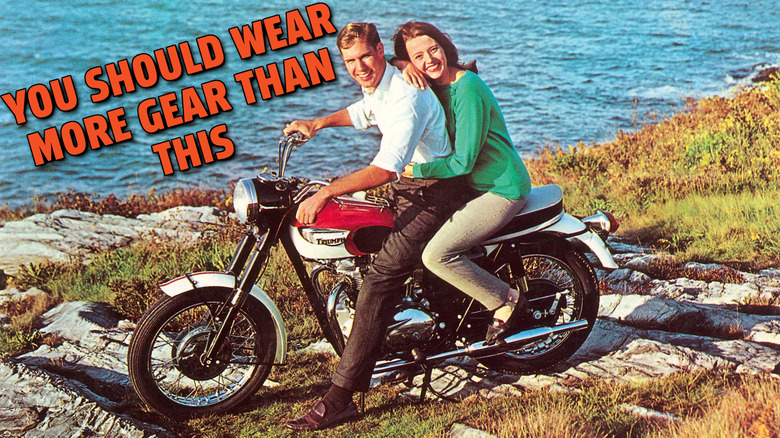It’s a nice thought, isn’t it? You and a significant other, pressed against each other atop your bike, cruising into parts unknown as the sun sets behind you. The two of you melding with the machine, the way you already do yourself on your solo rides — the only real solution to the three-body problem that exists. Remember, though, that bikes aren’t just the romance. They’re mechanical beings, with peculiarities and dangers not present in cars. In fact, cars are often the cause of many of our worries. So, when getting ready for that first couples’ ride, how should you and your pillion prepare?
You and your passenger will have to make some adjustments, both before you get out on the bike and once you’re on it. Your gear, your bike, and your style of riding all have to be taken into account: Don’t leave anything as an afterthought. You’re responsible for your pillion out there, so you want to be as prepared as you possibly can to ensure their experience is as fun, safe, and repeatable — after all, why take someone out if not to introduce them to the joy of motorcycling?
The rider
Before taking a passenger on your bike, understand that it’s an entirely different riding experience. Unless you’ve got a tiny passenger on a Gold Wing, your pillion will likely be a considerable percentage of the bike’s weight. The whole bike-and-riders system will weigh more than you’re used to, and that weight will be moving in ways that aren’t entirely in your control. Your acceleration, braking, turning, and especially your clutch control need to be slower, softer, and more measured. Take your time with your ride. You’ll feel the difference immediately, and you’ll have to relearn how to ride with this new setup.
You’re also in charge of teaching your pillion, both on and off the bike. Make sure they know how to get on and off the bike, and where to keep their weight over the seat, but most importantly make sure they know how to talk to you on the bike. Helmet comms, tapped morse code on your shoulder, just make sure there’s a way for your pillion to talk to you. If they’re uncomfortable, if they want anything changed, it’s on you to adapt.
The passenger
Speaking of how to communicate with your passenger, they’ll have to learn more than just how to talk to you. Your pillion should know to get on and off the bike from the kickstand side, using the passenger footpegs, and only once you’re firmly on the bike with the kickstand up and your feet planted. Work out with them whether you want them to hold your body or a set of handles built into your bike (if your bike has handles), and ensure they’re not holding on to your shoulders — doing so will mess with your control of the steering, clutch, throttle, and front brake.
Your passenger is also going to need full gear. They may not be controlling the bike, but they’re still on it — they still need to dress for the slide, rather than the ride. Boots, pants, jacket, gloves, helmet. You’ll have less control over your bike when it has a passenger, you’ll be less able to predict the results of your movements. Especially if you’re new enough to carrying pillions that you’re reading this guide, you should assume your risk of a crash is higher while you’re carrying a passenger. Don’t skimp out on safety just to feel cool.
The bike
Remember, from the top, that your bike will have more weight on it. That weight will be positioned further back than you’re used to, which will compress the rear suspension and make the front feel light and floaty. This will affect your ability to steer, and it won’t be subtle — your bike will feel less maneuverable than it ever has before. To counteract this, dial in some preload on your rear suspension to account for the added weight. Your owner’s manual should have the details on how to do that for your specific bike, whether you’re lucky enough to have a hydraulic adjuster or if you’re stuck busting out the wrenches like the rest of us.
While you’re in that owner’s guide, take a look at the recommendations for two-up tire pressures. Many bikes call for added tire pressures when you’ve got a passenger or heavy cargo load, especially in the rear, though it’s not universal — my old BMW F800GS asked for more pressure with a passenger, but my current Suzuki GSX8R doesn’t. This information might be on a sticker on your swingarm, but it’ll definitely be in your owner’s manual.
Riding with a passenger can be an incredible experience, and a fantastic way to bring new folks into the world of two wheels. Take your time with it, take care, and you’ll give your pillion a ride they’ll never forget. If you’re lucky, it’ll just be the first of a lifetime of two-wheeled trips to come.



